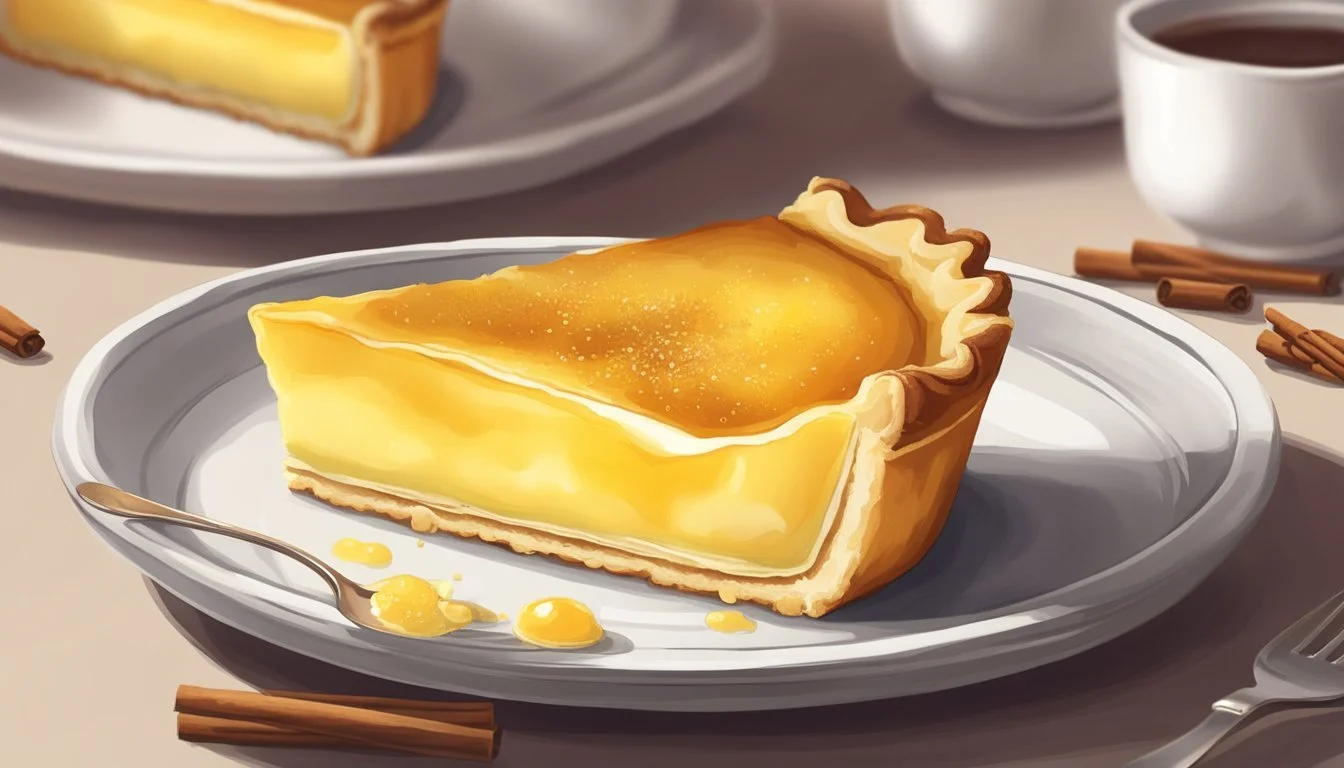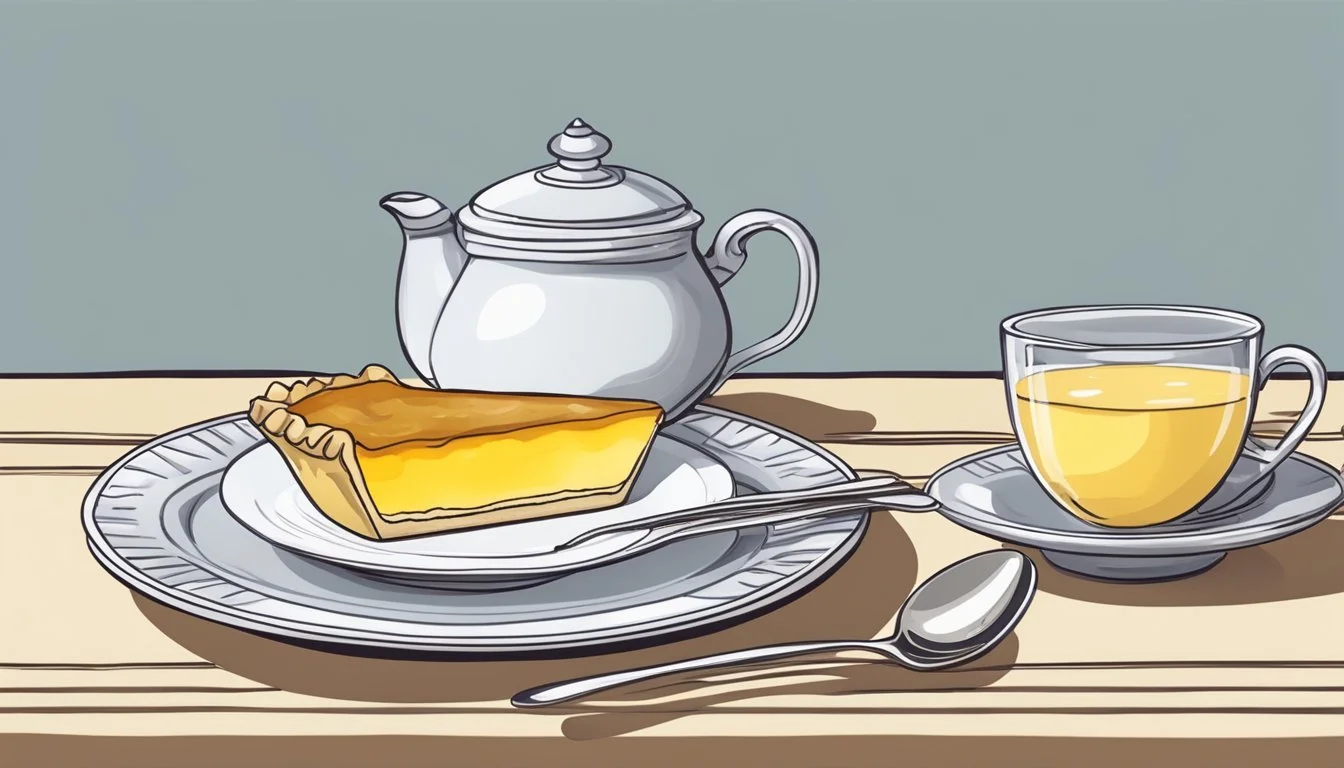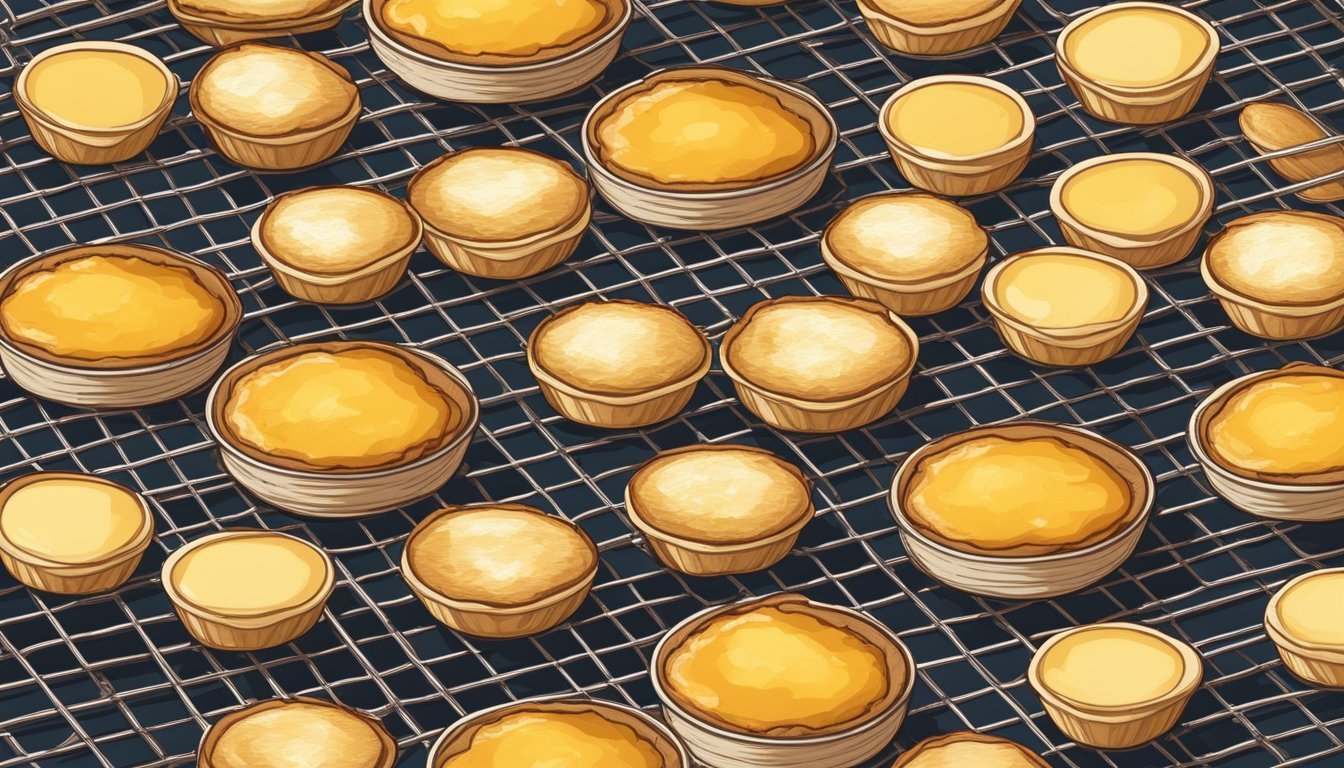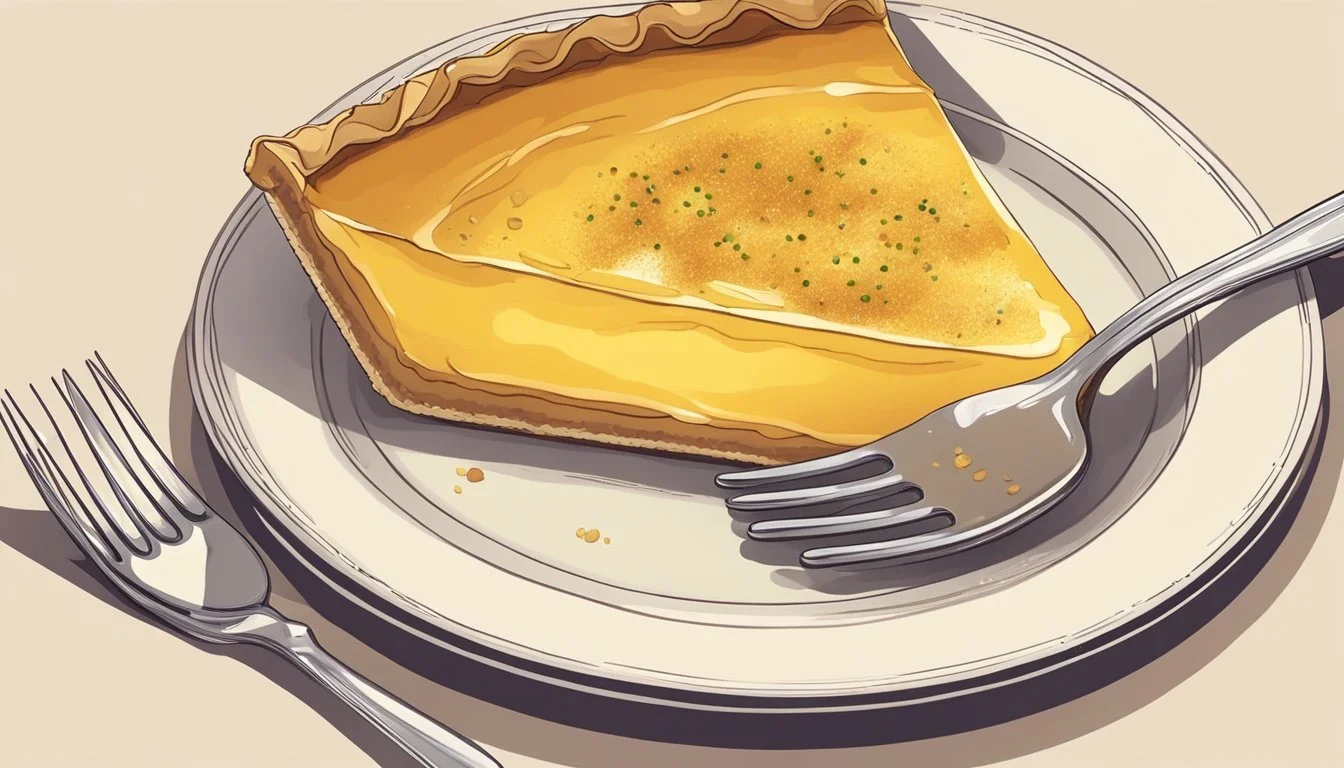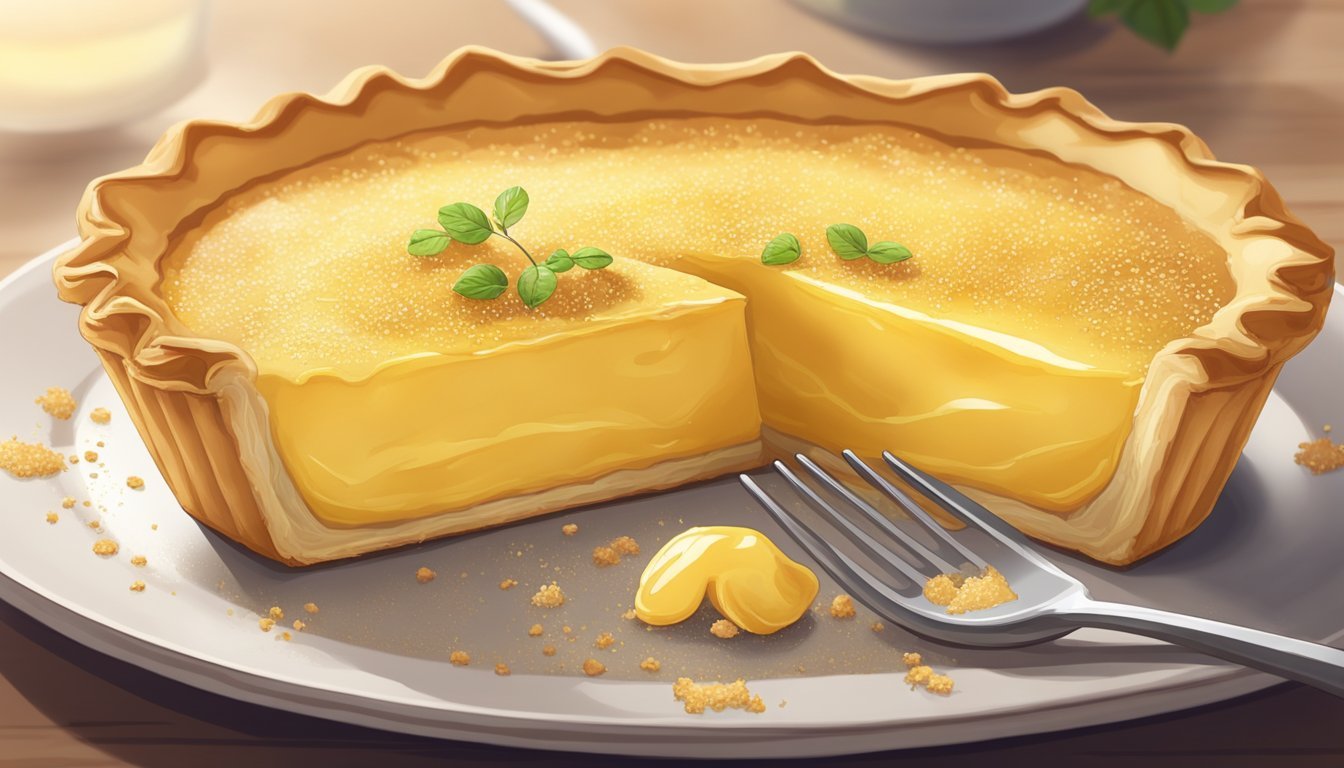How do you eat an egg custard tart?
Tips for Enjoying This Classic Dessert
Egg custard (how long do custards last?) tarts are a classic dessert beloved for their creamy texture and rich flavor. These tarts consist of a velvety custard made from a mixture of eggs, sugar, and milk or cream, poured into a crisp pastry shell. The dessert's origins are often traced back to England and Portugal, with variations enjoyed around the world. One of the joys of eating an egg custard tart is the contrast between the smooth, soft filling and the flaky, buttery crust, which provides a satisfying combination of textures in every bite.
Eating an egg custard tart is straightforward. It is often served at room temperature or slightly chilled, which allows the custard to set properly and the flavors to meld. One can enjoy the tart as a whole or in individual tartlets, which make for a convenient single serving. The simplicity of its ingredients allows the delicate balance of sweetness and the subtle taste of egg to shine through, often accentuated by a light sprinkling of nutmeg or a dash of vanilla.
Whether enjoyed as a part of afternoon tea, as a dessert after a meal, or as a treat on its own, the egg custard tart offers a delightful eating experience. While it can be eaten with a spoon or fork, many find that the most satisfying way to savor this treat is to simply pick it up and take a bite, allowing the creamy custard and crisp pastry to create a harmonious taste with minimal accompaniment. The key is to appreciate the tart’s simplicity and the craftsmanship that goes into creating this timeless dessert.
History and Origins
The historical arc of the egg custard tart is a rich tapestry that weaves through distinct cultures and cuisines. Originating in Europe, the custard tart is a beloved dessert with two main varieties capturing hearts: the Portuguese custard tart and its British counterpart.
Portuguese Custard Tart
Pastéis de Nata: These iconic tarts trace back to monastic practices in Portugal. Monks and nuns, utilizing leftover egg yolks from starching religious garments, birthed the creamy concoction in the 18th century.
Texture: Traditionally, Pastéis de Nata feature a crispy, flaky crust filled with a smooth, sweet custard.
British Dessert
The British custard tart is often linked to medieval times.
Distinguishing Features: British tarts are set apart by their nutmeg-sprinkled, custard-filled pastry—usually served at room temperature.
Despite the variations, the common link remains: a pastry crust enveloping a delicate, egg-based custard. Through colonization and cultural exchanges, these tarts have influenced desserts (What wine goes well with desserts?) worldwide, from the French flan to open-faced savory pies like the quiche.
Each tart is a bite-sized testament to the shared culinary history that transcends borders. While the exact historical origins are not always clear-cut, the egg custard tart's evolution is a testament to the wonder of culinary adaptability and invention.
Key Ingredients
Crafting an egg custard tart calls for a careful selection of ingredients for both its delicate crust and the creamy custard filling. Each component contributes to the dessert's overall flavor and texture.
Pastry Components
The base of an egg custard tart is its pastry. Typically, either puff pastry or shortcrust pastry is used. For shortcrust pastry, a mixture of all-purpose flour, unsalted butter, and a pinch of salt is commonly employed. The ingredients are blended until they resemble fine breadcrumbs, after which a small amount of water is added to form a cohesive dough.
All-purpose flour: Provides structure to the pastry.
Unsalted butter: Adds richness and contributes to the flaky texture.
Sugar: Often used in small quantities to slightly sweeten the dough.
Salt: Enhances the flavors of the other ingredients.
Custard Components
The custard filling is the heart of the tart, a silky concoction primarily made from dairy components such as whole milk or cream, alongside sugar and egg yolks. Vanilla often features in the form of pure vanilla extract, contributing a warm, aromatic flavor.
Whole milk or cream: The base of the custard, providing creaminess.
Large egg yolks: Thicken the custard and impart a rich color.
Caster sugar: Sweetens the custard; it dissolves quickly due to its fine texture.
Vanilla extract: Adds depth to the custard's flavor profile.
Sometimes, additional aromatic spices such as nutmeg or cinnamon are sprinkled on top of the tart before baking, complementing the gentle sweetness of the vanilla custard.
Utensils and Equipment
When preparing an egg custard tart, using the correct utensils and equipment is crucial for ensuring a smooth baking process and achieving a delicious result.
Tart Pan Selection
One must choose the proper tart pan for an egg custard tart. The pan typically used is a fluted tart pan with a removable bottom, allowing for easy removal of the tart after baking. For individual servings, mini tart tins can be used instead. Selecting a pan that conducts heat well, such as those made of heavy-duty steel or aluminum, ensures even cooking.
Mixing and Measuring Tools
Accurate measuring tools are essential. They will need:
Measuring cups and spoons
A kitchen scale for precise ingredient measurement, important for the tart's delicate texture
For mixing, the baker will rely on:
A large glass bowl for combining eggs, sugar, and other ingredients
A fine mesh strainer or fine sieve to ensure a smooth custard free from lumps
A whisk for thoroughly combining ingredients without incorporating too much air
A baking sheet may be necessary to stabilize the tart pan in the oven and to catch any spills. After rolling out the shortcrust pastry, it should be covered with plastic wrap and left to chill in the refrigerator, preventing shrinkage during baking.
Preparation Techniques
Creating a delectable egg custard tart requires careful attention to each step of the preparation process. Accurate measurements and temperature control are crucial for a successful result, ensuring a flaky pastry base and a smooth, creamy custard filling.
Making the Pastry Dough
One begins by combining cold butter with flour to achieve a mixture that has the texture of fine breadcrumbs. This is essential for developing a flaky pastry crust. Typically, the butter is worked into the flour using one's fingers or a pastry blender. Once mixed, cold water or an egg yolk is added to bind the dough. It is imperative to handle the dough minimally to prevent the development of gluten, which can make the crust tough. The dough should then be wrapped in plastic wrap and placed in the freezer for a brief chill or in the refrigerator to rest for at least 30 minutes before baking.
Creating the Custard Mix
The custard mix is the heart of the tart and requires a gentle touch. Eggs are lightly beaten with sugar until just combined, and then warm cream—heated to just below simmering—is gradually integrated. This is done slowly and steadily to avoid scrambling the eggs and to ensure a creamy custard. A fine strainer is often employed to ensure a smooth texture, devoid of any egg bits or chalazae. If flavorings like vanilla extract are used, they are added at this stage.
Assembling the Egg Custard Tart
First, the refrigerated dough is rolled out to an even thickness and carefully laid into the tart pan. It may be pricked with a fork and pre-baked or "blind baked" to set the crust and prevent sogginess. The creamy custard mix is then poured into the prepared pastry crust. The tart is baked at a carefully controlled temperature until the filling is just set, usually signaled by a slight wobble in the center of the custard. Once baked, the tart must be allowed to cool to room temperature to firm up before slicing and serving. The resulting treat offers a contrasting experience: a flaky, buttery crust filled with a luxuriously creamy custard.
Baking Process
The baking process of an egg custard tart involves precise steps to ensure a delicate, creamy custard set within a perfectly baked pastry shell. It's a two-part procedure—pre-baking the pastry and then baking the cohesive tart to achieve the desired texture and flavor.
Pre-baking the Pastry
One begins the tart by preparing and blind baking the pastry. This step prevents the crust from becoming soggy when the custard is added. The pastry dough, usually a pâte sucrée or sweet shortcrust, should be rolled out and pressed into tart pans. To keep the pastry's shape during the initial bake, pie weights or dried beans are placed over a layer of parchment paper, resting on the dough. The pastry shells are then baked in an oven, typically at 350-375°F (177-190°C) for about 10 to 15 minutes, until they are just starting to turn golden brown.
Baking the Custard Tart
After the pastry is pre-baked, the filling—a rich blend of eggs, sugar, and milk or cream—is carefully poured into the pastry case. One must ensure that the mixture is smooth, which is achieved by passing the liquid through a sieve if necessary. Baking continues at a lower temperature, often around 325°F (163°C), allowing the custard to cook gently and set without curdling. The baking time can vary but generally takes around 30-40 minutes. The tart is ready when the custard appears firm but with a slight wobble. It's essential to remove the tart from the oven once done to avoid overcooking the custard.
Serving and Presentation
A well-presented egg custard tart not only delights the palate but also the eyes, making it a sophisticated addition to any afternoon tea or dessert spread. Precise cooling and garnishing procedures enhance both flavor and aesthetic appeal.
Cooling and Removing from Tin
Once the egg custard tart is baked, it is crucial to allow it to cool completely before attempting to remove it from the tin. This step helps the custard to set properly, preventing it from breaking apart during removal. For best results, the tart should be placed in the refrigerator to cool; this also makes for a refreshing contrast if served on a warm day.
Garnishing and Serving
Prior to serving, a light dusting of nutmeg or cinnamon can add both visual appeal and a complementary spice note to the rich custard. For a glossy finish, one might brush the top with a sugar syrup, giving the tart a professional sheen. Serve the egg custard tart with fresh berries or a dollop of cream to balance the sweet custard filling.
Variations and Regional Twists
Egg custard tarts come in numerous variations, each with distinct regional characteristics that reflect local flavors and baking traditions. Two prominent versions are from Portugal and Hong Kong, both celebrated for their unique takes on this classic dessert.
Portuguese Style 'Pastéis de Nata'
Pastéis de Nata, also known as Portuguese custard tarts, boast a crisp, flaky crust paired with a rich, sweet pastry cream. Originating from Lisbon, these tarts are often dusted with cinnamon and powdered sugar. The defining feature is their blistered tops, achieved by baking at a high temperature, which contrasts with the creamy interior. Eaten traditionally in Portugal, pastéis de nata have gained popularity worldwide, often enjoyed with a strong cup of coffee.
Crust: Flaky and buttery
Filling: Creamy custard, typically caramelized on top
Temperature: Served warm or at room temperature
Accompaniments: Commonly dusted with cinnamon and powdered sugar
Hong Kong Style Egg Tarts
Hong Kong egg tarts reflect a fusion of British and Chinese culinary styles, having been adapted from the traditional English custard tart. They feature a smoother, buttery filling and are sometimes made with a shortcrust or puff pastry. The Hong Kong version is less sweet than its Portuguese counterpart and often served as part of dim sum. These tarts are an iconic element of Hong Kong's local cuisine and have extended their influence to neighboring Macau, where they are also widely savored.
Crust: Shortcrust or puff pastry, less flaky than Portuguese style
Filling: Less sweet, eggier custard
Presentation: Often has a glossy, smooth surface
Serving Occasion: Common in dim sum and as a dessert or teatime snack
Storage and Shelf Life
Proper storage is critical for maintaining the freshness and safety of egg custard tarts. At room temperature, these tarts should not be kept for more than two days. They are best stored in a refrigerator to prolong shelf life and inhibit the growth of microbes. In the fridge, they can last for 3-4 days when handled with care.
For optimal storage in the refrigerator, here are some recommendations:
Wrap the tarts: Use plastic wrap to cover the tarts snugly, preventing air exposure.
Seal in an airtight container: Place the wrapped tarts in a container with a tight-fitting lid.
Do not freeze: Freezing can adversely affect the texture and flavor, so it is typically not advised.
To summarize, follow these guidelines to ensure tarts remain enjoyable:
At room temperature: Use within 2 days, ideally in a cool place.
In the refrigerator: Consume within 3-4 days, and keep them wrapped and sealed.
Remember, the key to a delicious egg custard tart is not just how it’s made, but also how it's stored.
Nutrition Information
Egg custard tarts are a popular dessert item, often enjoyed for their creamy, delicate flavor. This section breaks down the nutritional aspects to consider when consuming this dairy-rich dessert, providing insights into its caloric content and dietary implications.
Caloric Content
An average serving size of one egg custard tart (approximately 85 grams) contains about 206 calories. Of these calories, fat contributes 83.7 calories, which denotes that roughly 40.6% of the tart's calories come from fat. It is important for consumers to factor in this caloric information, particularly when monitoring daily calorie intake.
Dietary Considerations
When evaluating egg custard tarts from a dietary perspective, it's noteworthy that they contain dairy, specifically in the form of milk or cream, which is a core ingredient in the custard filling. Individuals with lactose intolerance or dairy allergies should be cautious. Moreover, the nutrition facts indicate a considerable amount of fat content, which should be considered within the context of one's overall diet, especially for those monitoring their fat intake for health reasons.
Troubleshooting Common Issues
In making an egg custard tart, bakers can encounter several issues that affect the quality of the pastry or custard. Precise attention during preparation and baking can ensure a flaky crust and a smooth custard, leading to a delectable outcome.
Pastry Problems
Flaky Crust: Achieving a flaky crust for an egg custard tart requires cold butter to be integrated into the flour until the mixture resembles coarse crumbs. Overworking the dough or allowing the butter to warm can lead to a dense crust.
Success: Cold butter cut into small pieces.
Fail: Butter that has melted or softened excessively.
Custard Complications
Curdled Custard: For custard to have a smooth consistency, one must cook it gently to avoid curdling. Starch can be added to stabilize the mixture, but too much can make the custard too firm.
Creme Patissiere: If the tart calls for creme patissiere, ensure that eggs and milk are mixed at a low temperature before heating to reduce the risk of curdling.
Liquid Custard: A custard that fails to set could be a result of underbaking or insufficient eggs or starch in the mixture.
Baking Blunders
Baking the Tart: Oven temperature must be managed to prevent the custard from puffing up or cracking. A consistently low and gentle heat allows the custard to set without overcooking.
Overcooking: May cause the custard to split. It should be removed from the oven when it still has a slight wobble in the center.
Temperature Fluctuations: Can lead to an uneven bake. An oven thermometer can help maintain the correct temperature for success.
Conclusion
Eating an egg custard tart is an enjoyable experience that can be tailored to personal preference. The tart is best served at a temperature that accentuates its flavors. For those who enjoy a warm dessert, heating the tart briefly in an oven or toaster at 350 degrees Fahrenheit will soften and warm the custard filling. In contrast, others may prefer it straight from the refrigerator, offering a firmer custard and a crispier pastry.
When indulging in this dessert, one may choose to savor it plain, allowing the delicate balance of egg, cream, and sugar to shine. Alternatively, a dusting of nutmeg or cinnamon can be added for an extra hint of warmth and depth of flavor. The versatility of an egg custard tart is part of its charm, catering to various tastes and occasions.
In terms of preparation, the custard tart recipe is a careful blend of simplicity and technique. The pastry forms the base, usually a pâte sablée, providing a buttery and crumbly contrast to the smooth, velvety custard. The custard itself is a mixture of eggs, milk or cream, and sugar, with some variations including vanilla extract for added aroma.
Finally, presentation plays a role in the enjoyment of an egg custard tart. A beautifully browned surface and a well-constructed crust contribute to the visual appeal, making it as much a feast for the eyes as it is for the palate. Whether following a traditional recipe or a modern twist, the custard tart remains a revered dessert that brings satisfaction to those who appreciate the subtleties of classic baking.



